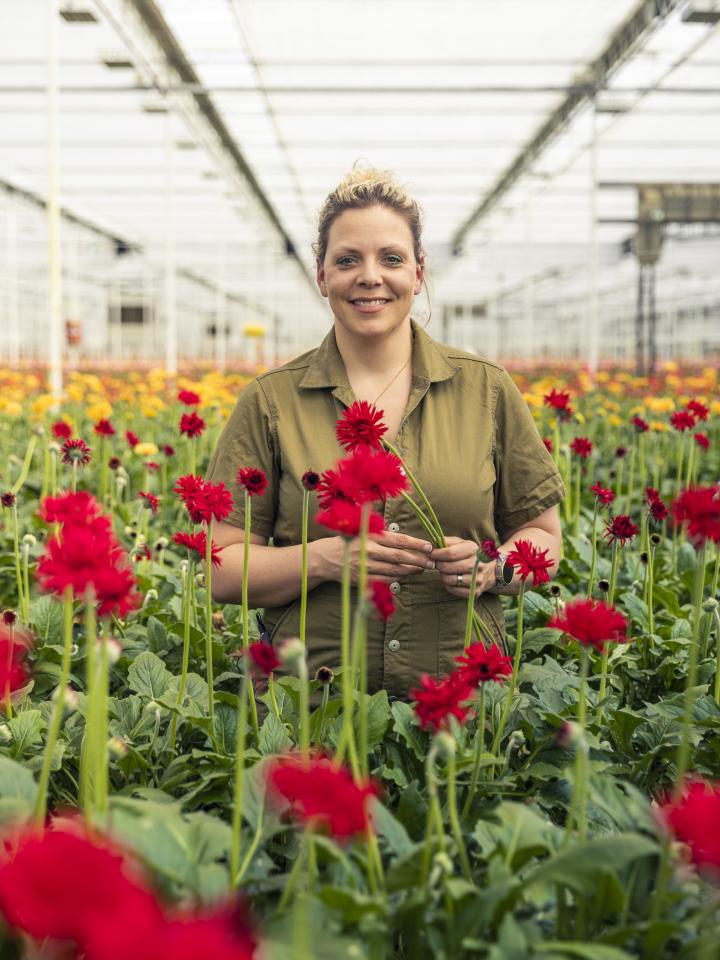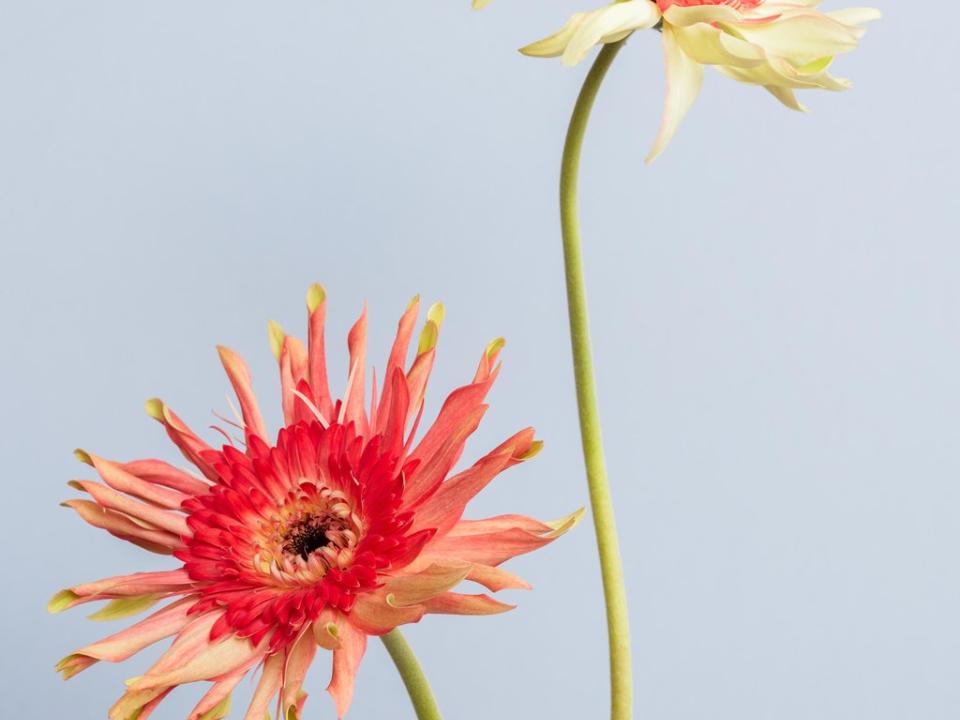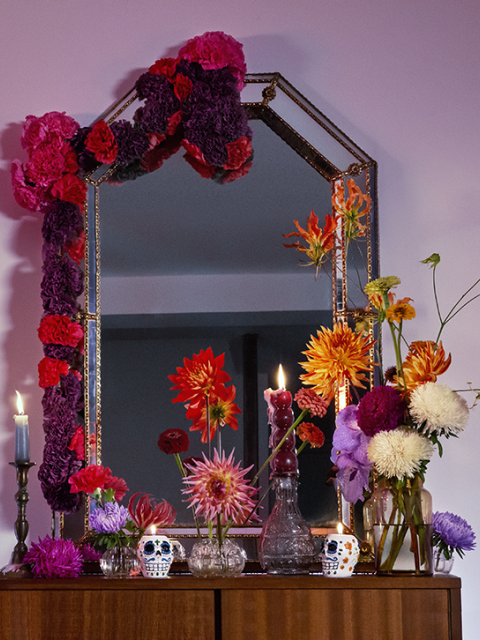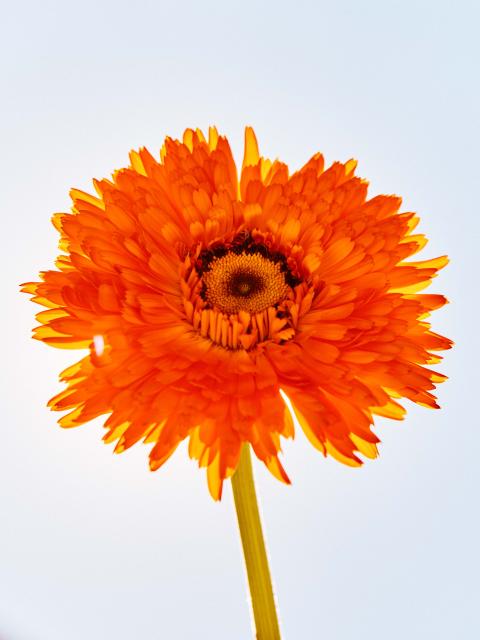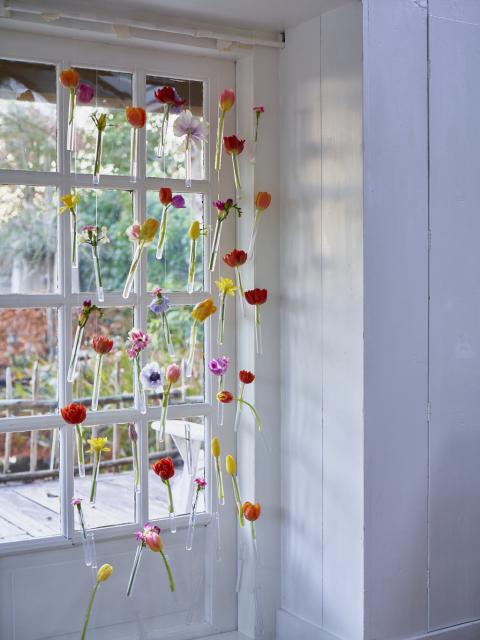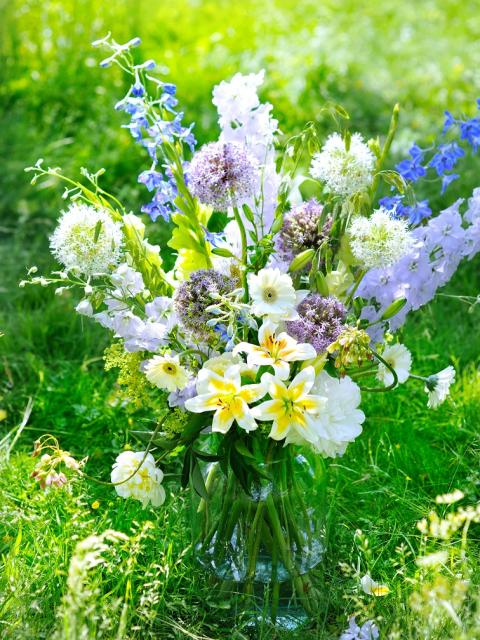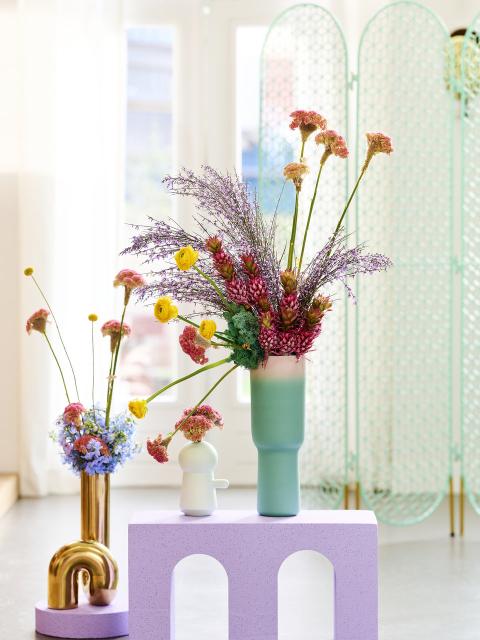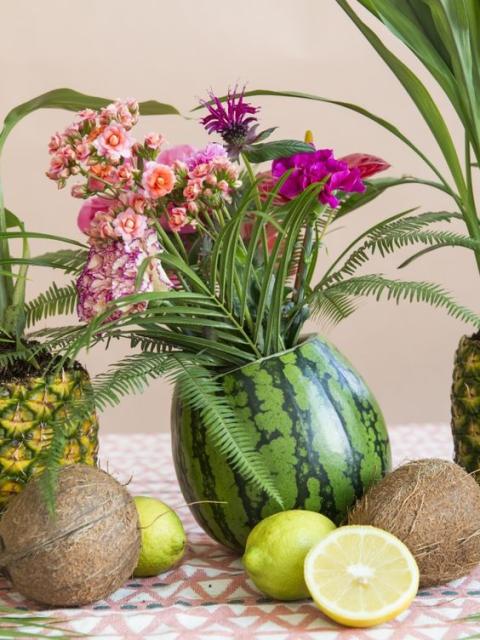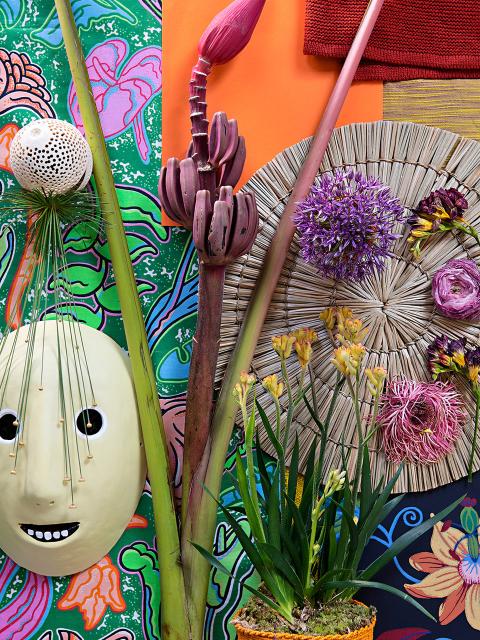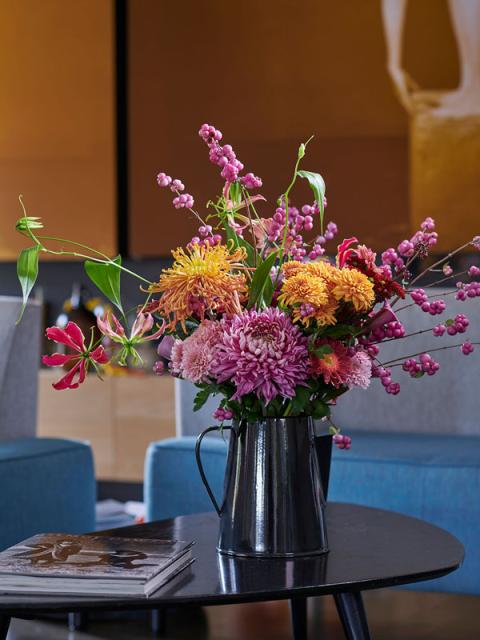GERBERA: CHARACTERISTICS AND FLOWERS
Gerbera is synonymous with colour. The basic and most common colours are red, yellow, pink, purple, orange, green and white. The flower can also come in bi-coloured, multi-coloured and various colours derived from the base colours. The beautiful heart of this flower can be black, yellow or green. Gerberas petals have a variety of shapes, including single- and double-flowered gerberas and gerberas with pom pom- and spider-shaped petals. Gerbera stems are long, soft, hairy and narrow. There are no leaves on the stems of cut gerberas.
Gerberas belong to the composite family (Asteraceae), which also includes flowers such as chrysanthemum, daisy and aster. Gerberas are non-scented and are available all year round. As a garden plant, gerberas usually flower from spring until the first frost arrives (around October).
GERBERA: CUT FLOWER AND GARDEN PLANT
Although gerberas are best known as a cut flower intended for a vase, gerberas are also available as garden plants. You can have potted gerberas, or gerbera seeds to plant in the open ground. However, many gerbera varieties are not terribly hardy, meaning you need to bring them indoors during winter to protect them from frost and cold weather.
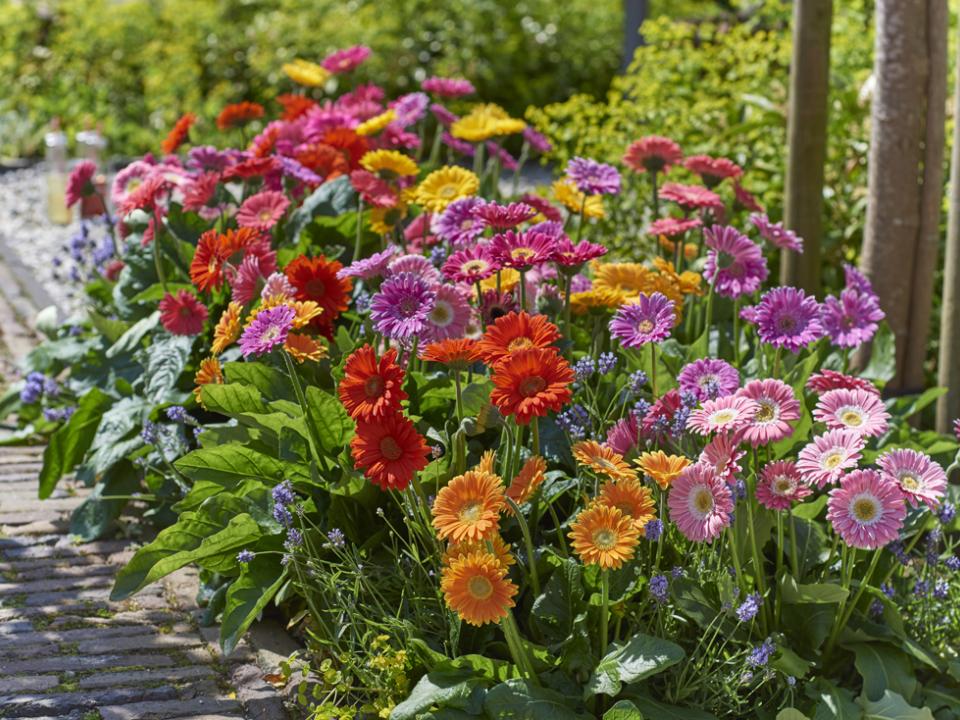
TYPES OF GERBERAS
There are more than 600 varieties of gerberas. They are cultivated and developed extensively, with new varieties being created all the time. Roughly speaking, gerberas can be divided into standard gerberas and mini gerberas, or germini. If a gerbera has a diameter of between 6 and 8 centimetres, it's classed as a mini gerbera. A standard gerbera has flowers around 9-15 centimetres in size.
Some well-known varieties of gerberas are the three below. Cross-species gerbera (for example, crosses between Jamesonii and Viridifolia) are also relatively common. These are also called hybrid varieties, referred to as Gerbera Hybrida.
- Gerbera Jamesonii: this variety is perhaps the best known. Jamesonii is known for its large and colourful flowers and is popular as a cut flower. This species includes many varieties of gerbera, such as Gerbera Jamesonii Twister and Gerbera Jamesonii Durora.
- Gerbera Garvinea: this is a hardy, perennial plant. It's one of the few gerbera varieties that is hardy, which is why this species is popular as a garden plant in pots or in the garden. Garvinea was further developed from the popular gerbera Jamesonii. Garvinea blooms from early spring until the first frost and is a colourful addition to your garden! Note that you'll need to protect your gerberas during severe frosts by placing leaves or straw around the plant.
- Gerbera Viridifolia: this plant is known for its pink flowers (ranging from pale pink to deep pink) and its many bright green leaves emerging from a silky crown. It flowers early in spring and is native to certain parts of South Africa, where it grows wild in grasslands.
GERBERA DAISY
Did you know that gerbera is also called African daisy or Barberton daisy? Daisy is the English name for the gerbera. It owes this nickname to its petals, which resemble those of daisies.
HOW TO CARE FOR CUT GERBERAS IN A VASE
Have you brought home a beautiful bunch of gerberas? You'll want to enjoy them for as long as possible. Check out our care tips below for looking after the gerberas in your vase and see this article on how to choose the right vase, including tips for keeping cut flowers such as gerberas fresh for as long as possible.
- Cut the stems diagonally with a sharp and clean knife.
- Use a clean glass vase and fill it with room temperature tap water.
- Gerberas, much like tulips, continue to grow once placed in a vase. Keep this in mind when choosing your vase - make sure they have enough space!
- Add cut flower food to prolong the life of your blooms.
- Change the vase water regularly.
- Are your gerberas drooping? If so, cut another piece off the stem at an angle with a sharp, clean knife.
- Do not place gerberas in a draught, in direct sunlight or near any heat sources such as radiators.
- Don't place gerberas next to the fruit bowl, as the ethylene gas released by ripening fruit causes flowers to wilt faster.
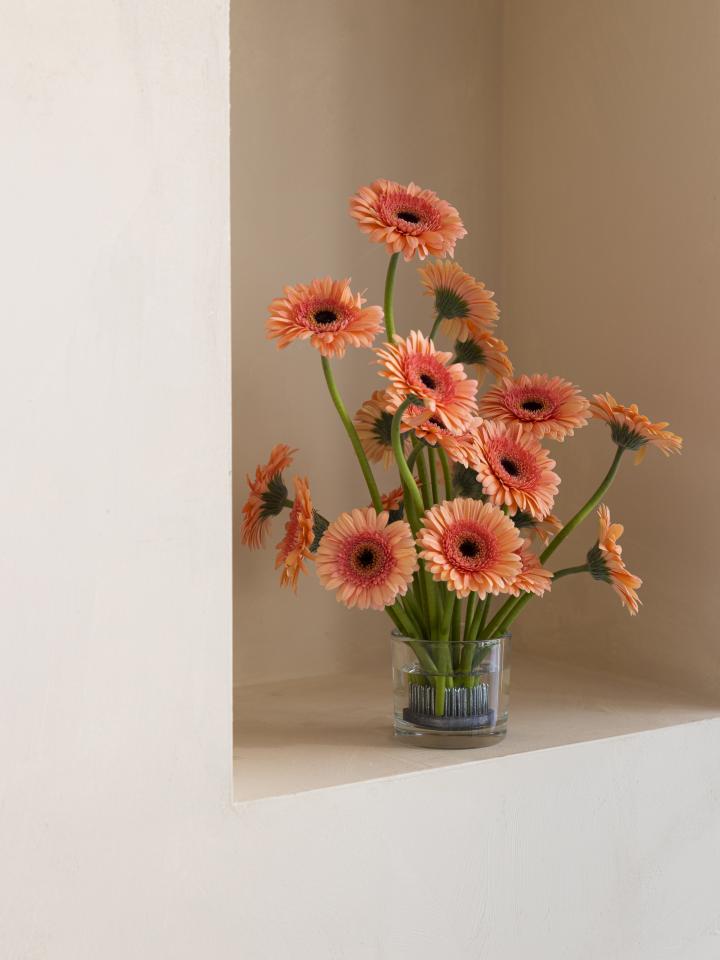
HOW TO ARRANGE GERBERAS IN A VASE
Gerberas combine well with many other cut flowers in a mixed bouquet and is also beautiful as a mono-bouquet (featuring onl gerberas). However you arrange them, they'll look lovely. But why not consider a ore unusual way to arrange your flowers? How about these three original ways to arrange a bouquet, like the Ikebana bouquet above featuring orange gerberas with playful height differences?
HOW TO POSITION AND CARE FOR GERBERAS IN YOUR GARDEN
There's nothing like the joyful sight of colourful gerberas thriving in your garden or on your patio or balcony. Gerberas are easy-to-care-for plants with low susceptibility to diseases or pests. Check out the care tips below to get maximum enjoyment from your gerberas:
- Many aerberas are not hardy, so ensure you buy a hardy variety to plant in your garden or grow gerberas in a pot so you can overwinter the plant indoors. Gerbera Garvinea is the most hardy variety. In severe frosts, however, it's necessary to protect the Garvinea such as with foliage cover.
- Planting gerberas in your garden or in a pot? Take a look at this article on planting garden plants.
- Grow gerberas in the sun or semi-shade.
- Hardy gerberas such as Garvinea make few demands on their soil as long as it's well-drained. Ensure good drainage and make sure the soil is not too wet, as gerberas do not like to have soggy bottoms. This can lead to root rot.
- Remove spent flowers so that the plant can produce new ones. Do this by cutting off the stems at the base of the spent flower.
- Give gerberas plenty of water during drier, warmer months. Make sure the soil is sufficiently moist, but avoid making it too wet. They need watering when the leaves start drooping.
- During their flowering period, give gerberas in pots or other containers some plant food.
- Fertilise gerberas growing in your garden with organic fertiliser in spring
HOW TO PRUNE GERBERAS
Gerberas growing in your garden don't need pruning, but there are some things you should keep in mind when caring for gerberas in your garden or on your balcony:
- Remove spent flowers immediately after flowering so that the plant can produce new flower buds. Cut off the stems where the spent flowers are attached.
- Remove brown or dry leaves so that fungi don't have room to grow. This also ensures the plant retains enough strength to stay healthy.
- Remove any dead plant parts in spring. Don't do this in autumn, however, as the leaves protect the plant from the winter cold.
HOW ARE GERBERAS GROWN?
As many as 900 million gerberas are produced annually in the Netherlands, with 600 different varieties of colours, shapes and sizes. This makes the Netherlands one of the leading countries worldwide for gerbera cultivation.
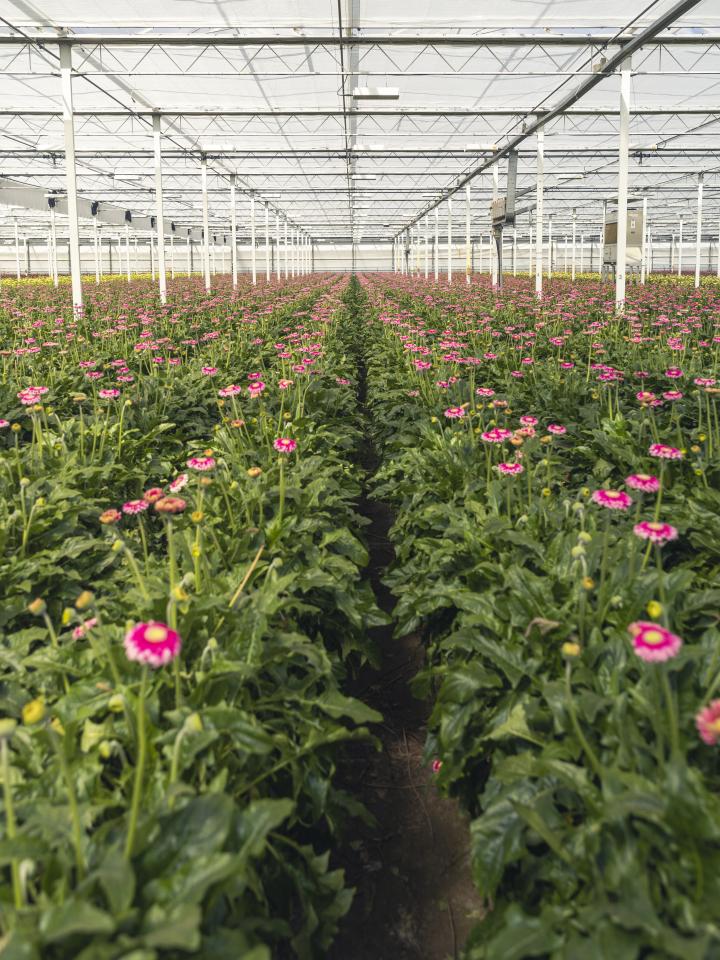
GERBERA SYMBOLISM
Officially, the gerbera has no meaning, but that does not mean there is no symbolism attributed to the flower. Gerbera is often seen as a symbol of cheerfulness, vibrancy, innocence and purity. If you give someone gerberas, then you're gifting them a big dose of positivity! How could it be otherwise when tjeu resemble radiant suns on stems?
WHERE DO GERBERAS ORIGINALLY COME FROM?
Gerbera is native to South Africa, Asia, South America and Tasmania. In 1737, Gronovius, a Dutch botanist, published the first description of a plant similar to the gerbera. However, it was German botanist and researcher Traugott Gerber - a friend of the famous Swedish botanist Carl Linnaeus - who discovered the plant during an expedition in South Africa in 1735. The plant was later named after him in honour of his discovery and contribution to botanical science.
After returning to Europe, the gerbera was researched further and studied by various botanists. It took until the 19th century before gerberas became popular in Europe. More and more varieties were developed and today the gerbera is a very popular cut flower and garden plant.
ARE GERBERAS POISONOUS?
No, gerberas are not toxic to either humans or animals. The cut flower and garden plant contain no toxins and are therefore safe around small children and pets such as dogs and cats.
